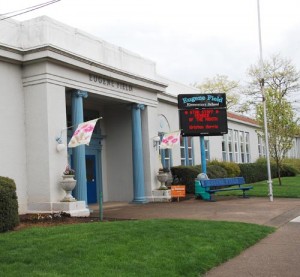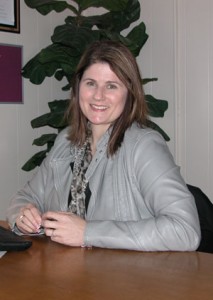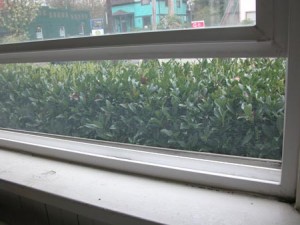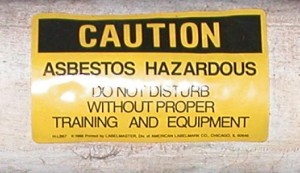Editor’s note: This is second in a series on the state of Silver Falls School District facilities. The first part, on the functionality of the Eugene Field Elementary School building, appeared in the March 15 edition of Our Town.
For at least two decades, Eugene Field Elementary School staff members have pondered a question: Is there something in the building causing people to become ill?
Since 1968 community discussions have occurred about discontinuing the use of Eugene Field, which houses kindergarten through third grade education.
Now, yet another Silver Falls School District Long Range Facilities Committee is discussing the next step in planning for the district’s facilities. The group will present its recommendations to the Silver Falls School District Board on June 25. The future of Eugene Field School is one of the items under discussion.
 Following up on reported health concerns at the school, Our Town distributed a short questionnaire to the school’s 51 staff members and received 24 responses.
Following up on reported health concerns at the school, Our Town distributed a short questionnaire to the school’s 51 staff members and received 24 responses.
Of those, 18 said they believe their health concerns may be related to the building, and that same number said there appears to be a pattern of health concerns including asthma, sinus infections, bronchitis, headaches/migraines, dizziness and respiratory problems. Fifteen reported their health concerns seem to go away when they are away from the building during weekends and summer months.
“People have expressed concerns about chronic illnesses which could possibly be related to the building,” Principal Jennifer Hannan said. “The district has done extensive testing on the building and it has been deemed safe to occupy. It’s not ideal but it’s not dangerous.”
Everyone interviewed – both on and off the record – emphasized they did not want to point fingers, hurl accusations or cause panic. Instead, they want to know if there is any validity to what seems to be a pattern of health concerns experienced reported by staff members.
A teacher who has taught at Eugene Field since 2007, said both teachers and students deserve a safe and healthy place to work and learn.
“I don’t think to say that teachers are putting their lives and health and well-being at risk is an exaggeration,” she said.
Twenty-two out of the 24 questionnaire respondents said they believed further tests should be done, especially testing for mold and mildew, which several staff members believe to be prevalent in the basement.
Another teacher, who asked not to be identified, said there have been several teachers with chronic illnesses but there is no way to link their illness to the building. She said many teachers don’t complain about the building because they fear professional repercussions.
“Those teachers who have moved out of the buildings into the mobiles, report that they have not been chronically ill since moving out of the old building,” she said.
Silver Falls Superintendent Andy Bellando said he doesn’t understand why staff members are fearful to speak to their principal about their concerns.
“The safety and well-being of students, staff members and visitors is a constant priority in all district schools,” Bellando said. “When we find areas to address or when they are reported to us, they are quickly and completely addressed.”
Former teachers raise questions
Douglas Jenkins, who retired from Eugene Field in 2007 and taught there 15 years, said he believes there is a strong correlation between the amount of time one works at Eugene Field and the likelihood of health challenges of one kind or another.
“I believe that such a correlation is even stronger for staff members who experience respiratory health difficulties, chief among them asthma, sinus infections, and throat irritations and infections,” Jenkins said.
By describing his concerns as a correlation, he said it avoids the path of finding fault and establishing a cause.
“Correlations do not posit a cause-effect,” Jenkins said. “They simply establish a probability that one condition will accompany another.”
Since retirement, Jenkins said he has enjoyed excellent health.
“In my last five years working at Eugene Field, I routinely had sinus infections and/or strep throat infections, which required antibiotics to mitigate,” he said. “In my last years working there, my sick leave use increased to 8 to 17 days per year.”
Sarah Smith taught third-grade at Eugene Field for four years, before leaving to continue her education.
“While there, I was often sick and always felt run down with not a lot of energy,” Smith said. “I did develop asthma while working there. I had never had that before. Not sure if it was caused by bad air quality, germs, or an old, moldy building. It’s a mystery. I had an inhaler that I would use every morning.”
During her first year after leaving the school she reported she was rarely sick and felt “100 percent better.” Her asthma has improved, and she says she uses her inhaler on average three times a year now.
“As far as concerns, I know there were a few teachers who left and ended up developing cancer. Could be a coincidence. Or just genetics,” Smith said. “The building is old, dusty, moldy and who knows what kinds of chemicals are in the paint/walls. The janitors did a great job at cleaning, but I would still come down on the weekends to do a deep clean/disinfect.”
In her former classroom, Smith said a closet had doors that slid up and down to open.
“I was told I had to leave them where they were so I didn’t disturb whatever was in the ceilings,” she added.
Principals deal with concerns
 Hannan has had continuous sinus challenges and multiple rounds of antibiotics since she started working at the school in the fall.
Hannan has had continuous sinus challenges and multiple rounds of antibiotics since she started working at the school in the fall.
“It could be more kids or younger kids or less sleep or more stress, but it’s true that I didn’t have this issue working in other buildings,” Hannan said.
“I don’t think the air quality or environment in this building is ideal, but I don’t feel like it’s dangerous. I am comfortable working here and I am comfortable having my kids here.”
During the decade she was the school’s principal, Cathy Brosnan-Trepus said she had chronic respiratory problems, including sinus infections. Since taking a position in Salem, she said she has had no problems.
Brosnan-Trepus, who began working at Eugene Field in 2001, said she expressed her concerns about the building with the district administration in the spring of 2002.
“I was seeing a pattern of people with illnesses, especially respiratory illnesses. During my time as principal, we had a lot of teacher absentees,” Brosnan-Trepus said. “The staff was asking me if the issues were related to the building. The question has been hanging out there for a long time. Is there something in the building causing us to be sick? Dust? Mold? What could it be?”
 Brosnan-Trepus said the district staff responded to her and her staff’s concerns by conducting air quality tests every time they asked, except the last time.
Brosnan-Trepus said the district staff responded to her and her staff’s concerns by conducting air quality tests every time they asked, except the last time.
The first air quality test in 2002 resulted in the recommendation that two windows be left open two inches, so there would be air circulation. The 92-year-old building does not have a ventilation system.
“When I asked for another test in 2010, I was told it wasn’t economically feasible because it would probably have the same results,” Brosnan-Trepus said.
Getting a handle on the issue
Any time a student scrapes his knee on a playground, Maintenance Supervisor Pete Paradis knows about it. He said he then tries to determine if there is a way to improve the safety at that playground.
“My job is to make every building in our district a safe place for students and staff,” he said. “If Eugene Field was unsafe, I would know about it. If we thought there was a threat or a hazard at Eugene Field, we would not put people in a hazardous situation.”
Paradis said each building in the district – with the exception of the new high school, has an asbestos management plan. As required by law, annual notification is made to parents, staff members and the community about the management plan.
 Paradis confirmed there is encapsulated asbestos in the insulation of boiler pipes in the school’s boiler room and attic. He also suspects asbestos is in the popcorn ceiling above the main office, adding a second ceiling has been added to conceal and contain the first ceiling.
Paradis confirmed there is encapsulated asbestos in the insulation of boiler pipes in the school’s boiler room and attic. He also suspects asbestos is in the popcorn ceiling above the main office, adding a second ceiling has been added to conceal and contain the first ceiling.
The school board has designated Paradis as the Local Education Agency Asbestos Compliance Employee.
“As part of this designation Pete makes sure that custodial staff are trained to recognize and do required periodic surveillance of asbestos containing building materials,” Bellando said.
A door was recently installed between two classrooms, Paradis said, and tests before the work was done indicated no asbestos.
In April 2007, Trevor Ansbro of SAIF, which provides workers compensation insurance, conducted an indoor air quality survey to monitor for carbon dioxide, carbon monoxide, temperature and relative humidity when the windows in the classroom were left open at least an inch during testing. The tests were done in rooms 10, 25 and 29.
“Although there are no specific laws governing the quality of indoor air, certain professional organizations and research agencies make general recommendations,” a letter from Ansbro to Paradis reads.
According to the letter, the average carbon dioxide levels “detected with the windows open in all classrooms tested (excluding outdoor tests) were below the National Institute of Occupational Safety and Health recommended comfort ranges. This is an indication that ventilation provided by opening windows keeps the average CO level at comfortable ranges. Considering the weather conditions for the day, the carbon monoxide, temperature and relative humidity levels were all within the respective ASHRAE, NIOSH, OSHA and EPA recommended limits.”
Ansbro wrote, “Since the school lacks mechanical ventilation, it is very important that outside air is introduced into the classrooms. It is recommended that each classroom leaves two windows open at least an inch to introduce outside air into the class room.”
“We can only make the air inside the building as good as it is outside the building,” Paradis said.
Because of leaky radiators and water seen running down walls, several teachers reported concern about mold, a few stating they have seen it in the basement.
When asked about basement mold Paradis said it was the first he had heard of the problem and added to his knowledge no mold tests have been done.
Recent classroom evacuation
This year, Hannan said three staff members have complained of headaches and congestion that they suspect are related to air quality. Hannan recently evacuated a classroom after a teacher reported several students becoming dizzy and having headaches at the same time. She called maintenance and Bellando.
“Andy, Jerold, Helen, and I searched the room, tested the air, and checked the attic. We couldn’t find any issue and there was no recurrence,” Hannan said. “Our best guesses were that it was fumes from the diesel truck parked outside the classroom idling. Or perhaps a plastic container too close to the radiant heat giving off a smell. Or maybe just one kid being vocal and all of them joining in because they are 6? We weren’t able to conclusively determine what if anything happened.”
Bellando said he has been contacted about questions of air quality and fresh air exchange in the building.
“Follow up included determination of whether windows and doors were opened sufficiently and daily for proper air exchange of the building. Appropriate monitoring by administration and custodial staff was assessed. A follow up with staff also included reminders about the need for keeping windows and doors open sufficiently and about reporting concerns to the principal,” he said. “This includes the need to report if a staff member believed their health was impacted by any on-the-job condition.”
One respondent said people should know “that their child is in a building that I feel is unhealthy and unsafe for them. That we are doing the best we can with what we have and that we are really concerned about our health and the health of our students.”
Although Hannan believes the building is safe for students, staff and visitors, she said it is time to replace the building.
“We can do better for our kids than this,” Hannan said. “This is a community that values family and children and education. We can do better.”
